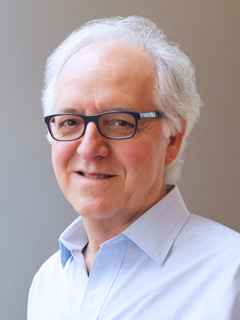HOW CAN WE HELP YOU? Call 1-800-TRY-CHOP
In This Section

Dr. Pacifici's biomedical research spans three decades and has explored mechanisms of skeletal development and growth in fetal and postnatal life. Specifically, his focus has been on identifying the cellular and molecular mechanisms that regulate the differentiation of progenitor cells and permit assembly of distinct skeletal structures, and on aberrations of these mechanisms in pediatric skeletal disorders.
Bio
Dr. Pacifici's research focuses on the identification of cellular and molecular mechanisms that regulate the differentiation of progenitor cells into skeletal tissues and permit the assembly of distinct skeletal structures. The following examples represent ongoing projects:
Synovial joint development: The synovial joints are essential for body motion, normal activities, and quality of life. Much is known about the structure, composition, and organization of their components; however, much less is known about how the joints actually form. Pioneering work from Dr. Pacifici's group has identified a specific subset of progenitor cells — collectively called the interzone — that emerge at each prospective joint formation site in the early fetus and then give rise to the joints.
Heterotopic Ossification and Fibrodysplasia Ossificans Progressiva: These two related musculoskeletal disorders involve the formation of excess skeletal tissue at abnormal anatomical locations. HO is caused by severe trauma, burns, and/or immobilization. It can also follow invasive surgeries. FOP is a congenital and extremely aggressive pediatric form of HO. Dr. Pacifici and his colleagues developed a potential therapy for FOP that involves a synthetic, industry-made retinoid agonist. That agonist, Palovarotene, is now in a Phase III clinical trial for FOP patients.
Hereditary Multiple Exostoses: HME (also known as Multiple Osteochondromas, or MO) is a pediatric skeletal disease characterized by benign cartilaginous tumors (called exostoses or osteochondromas) that form next to the growth areas of the skeleton in children and young adults. Because of their location, size, and number, the tumors can cause a number of health problems. In some HME patients, they can transform into malignant chondrosarcomas and become life threatening. NIH funding has allowed Dr. Pacifici and his team to create genetic mouse models of the disease, investigate possible mechanisms of tumor formation, long-term fate, behavior, and consequences on the skeleton.
Education and Training
BA, Liceo Scientifico (1969)
PhD, University of Rome School of Medicine, Institute of Histology and Embryology (1974)
Titles and Academic Titles
Director of Research, Department of Orthopaedic Surgery
Dr. Bong S. Lee Endowed Chair in Pediatric Orthopaedics
Professor of Orthopaedic Surgery